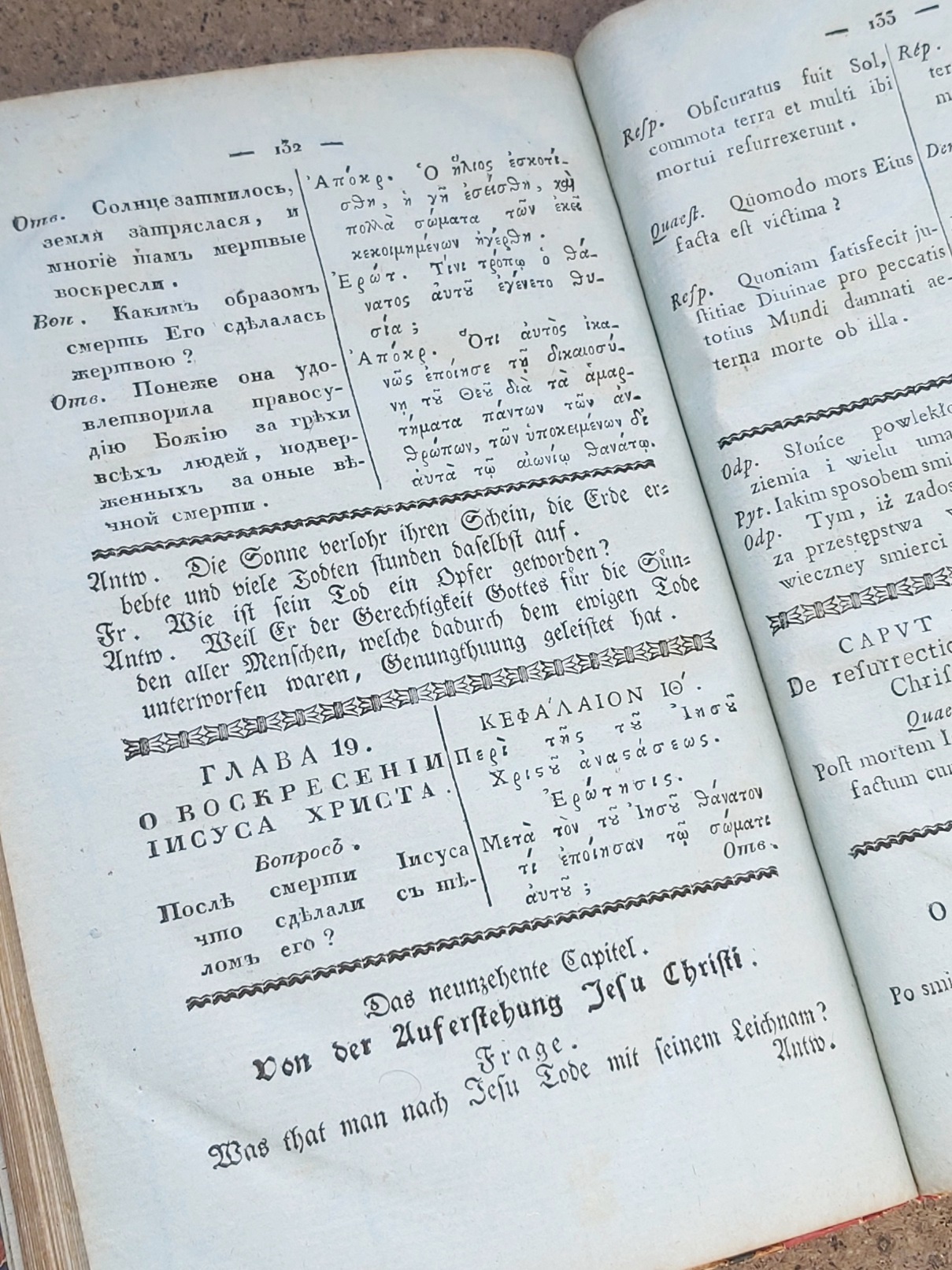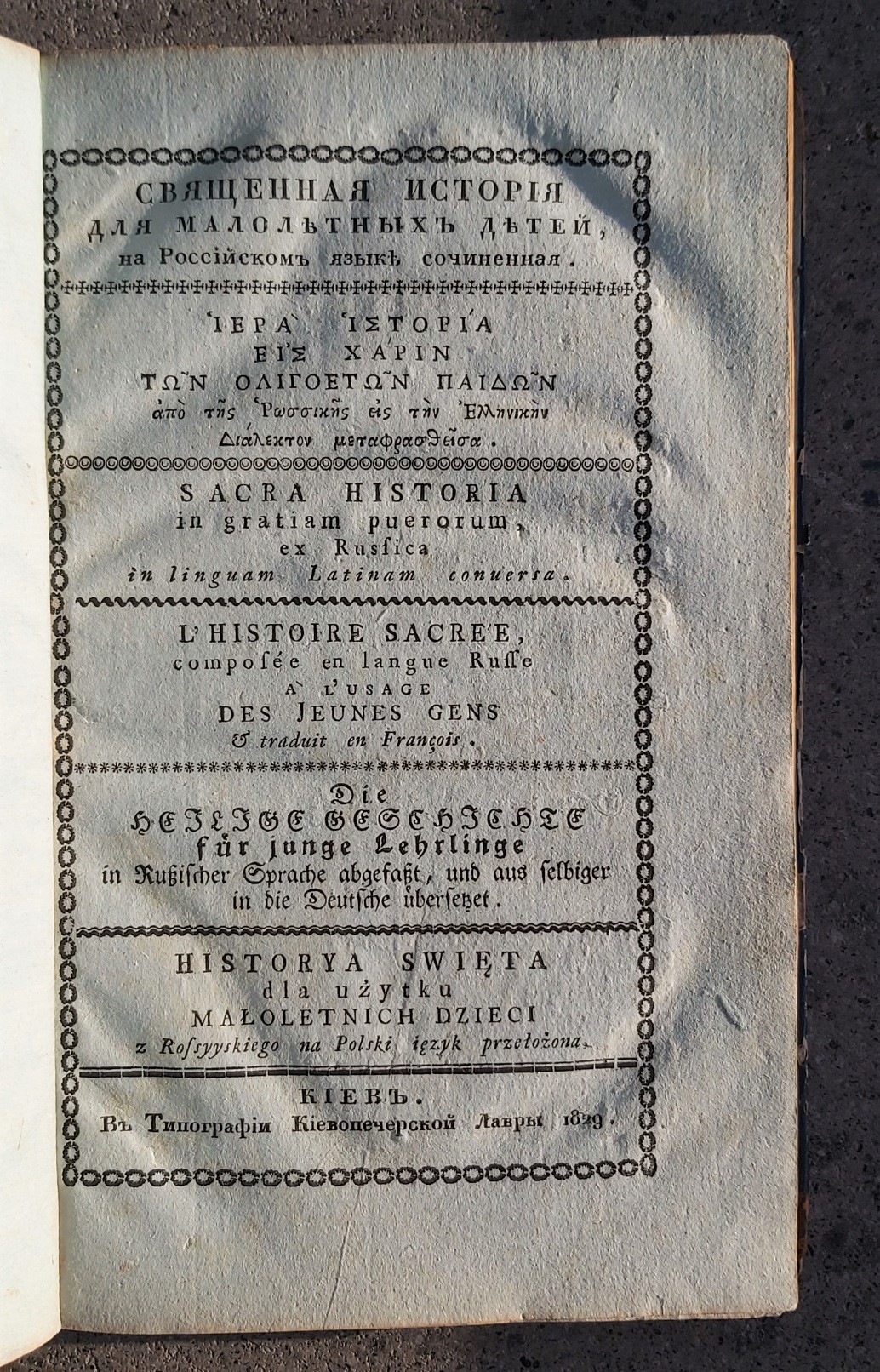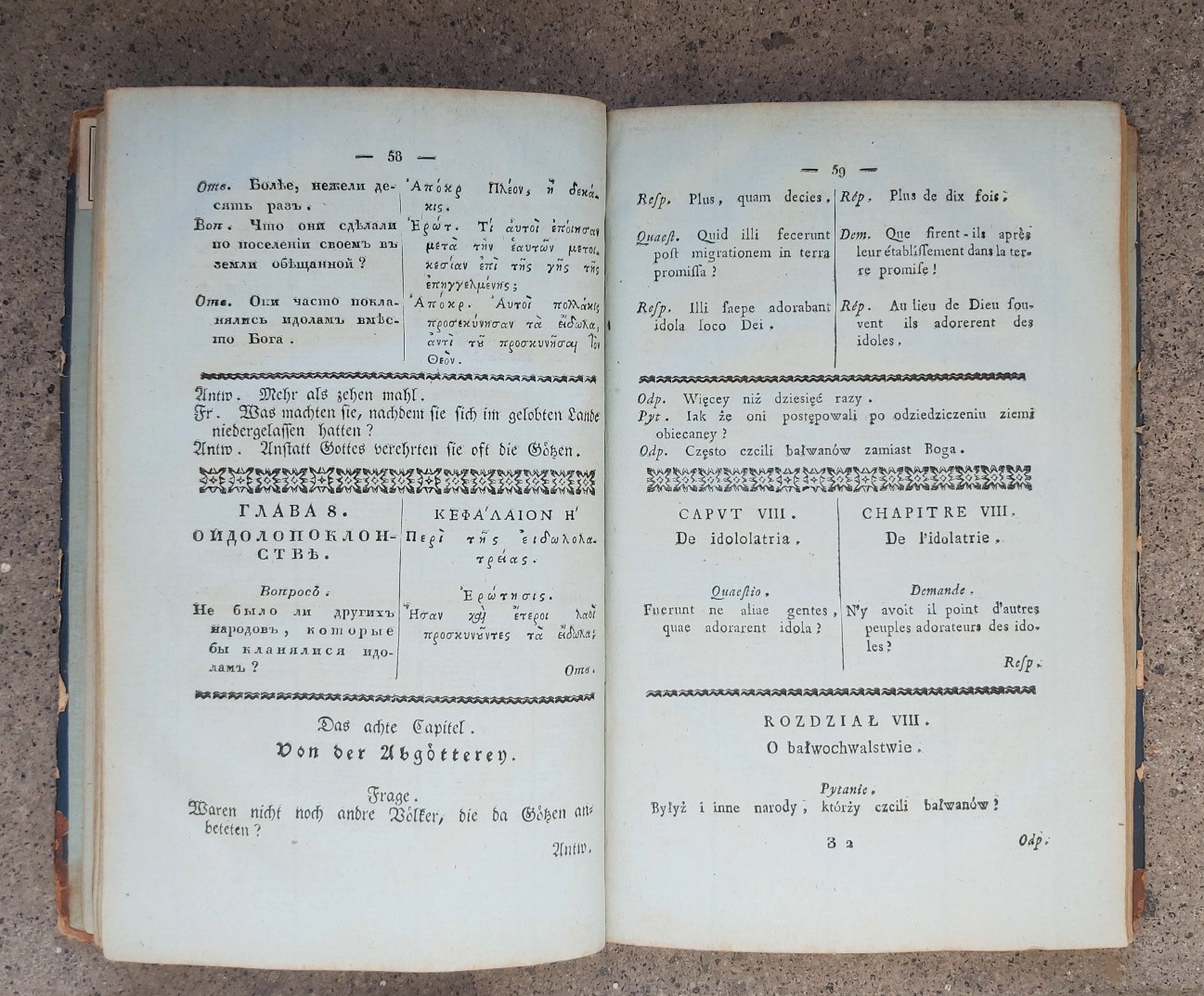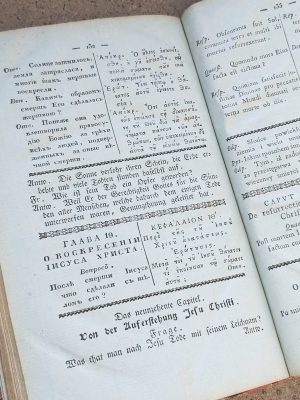Our Notes & References
A rare introduction to biblical story for children, in six languages, printed in Kyiv by one of the major Eastern European presses.
First edition in six languages, published almost 50 years after the first multilingual edition with five languages.
Veniamin Krasnopevkov-Rumovskii (1738-1811) headed the Alexander Nevskii seminary in St Petersburg, then became bishop of Olonets and Arkhangelsk governorates, and in 1804 was ordained archbishop of Nizhnii Novgorod. Under his active governance, the quality of religious and cultural education was greatly improved: he opened new churches and schools, encouraged preservation of historic documents and architectural monuments and ordered monasteries to create their own chronicles, documenting life and historic events in their regions. Among his main educational works is this Biblical history for children, originally published in multiple editions only in Russian starting from 1775, and then in five languages (Russian, Greek, Latin, French, German) in 1778 in St Petersburg. Polish was added for the first time in our edition (see below).
In the preface of the first edition from 1778, Veniamin notes that foreigners who teach their languages in Russian schools often don’t speak Russian at all, so his work could help them and their students understand each other better; he also suggests that pupils, while repeating the holy scriptures in different languages, would be able to learn them better. To that effect probably the page layout keeps several languages on the same page, with a pattern which changes often. The whole printing process must have been a headache for the typesetter, who had to cope at the same time with roman in various versions, italic, Greek, Fraktur, and Cyrillic type… The history is structured into 20 short chapters in an engaging and dynamic form of a Socratic dialogue, beginning with simple questions and answers: “Who created the world? – God. – From what? – From nothing. – Why?…”
The work was printed in Kyiv Pechersk Lavra, known as the Kiev Monastery of the Caves, one of the oldest and most prestigious printing centres in the Russian Empire. After its foundation in 1615, it quickly distinguished itself by the beauty and refinement of its publications, using sophisticated printing techniques, mainly for religious and historical literature, but also for polemics and pedagogy. Founded at the height of the confrontation between the Russian Orthodox and the Uniates (Greek Catholic Church, originating in the Polish–Lithuanian Commonwealth), the press was a powerful tool for promoting Russian Orthodoxy in the region, whose lands were still owned by mainly the Polish or Polonized Ukrainian nobility.
This posthumous edition was published during a growing separatist Polish movement, resulting the next year in the November Uprising that also involved the peoples of the modern-day Right-bank (central) Ukraine. The publication perhaps attempted to highlight the similarities in beliefs promoted by the Roman Catholic and Eastern Orthodox churches, while still suggesting the dominance of the latter. The inclusion of Polish is significant for this reason, while however placing the Russian text first in the sequence of translations (as opposed to French in the earlier, St Petersburg edition).
Rare: we could trace only one institutional example outside Russia (in California), and two there (RGB Moscow and RNB in St Petersburg). Only two other copies traced on the market in the last decade, including only one outside Russia.
Provenance
Library of E. D. York (label to upper pastedown and annotations in purple ink to upper fly-leaf); Wilson Collection (stamp to upper flyleaf).
Physical Description
Octavo (22,5 × 14 cm). Half title, 147 pp. incl. title, printed on blue paper.
Binding
Contemporary dark blue boards framed with blind-tooled decoration, leather corners, flat, plain spine of red paper.
Condition
Binding anciently rebacked with red paper, boards rubbed, corners more so and bumped,boards with minor losses of paper; pages edges very lightly browned, the odd spot of foxing or soiling, two leaves strengthened in gutter, but a crisp, pleasant example.








